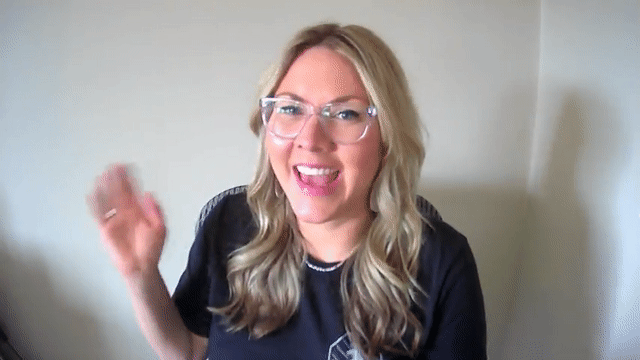“People don’t read! They only scan your content.” Sound familiar?
It’s exactly this sentiment that prompts so many content creators to abridge their posts in an effort to make things “bite-sized.” Because yes, most people would rather scan a webpage than read a 4,000-word article, but your audience isn’t most people.
The beauty of content marketing is that you can create blog posts that speak directly to your ideal customer’s needs. You’re providing answers to their questions and bringing free value, to boot. Organic search isn’t just people looking for a quick fix or fun facts. It’s potential customers with complex problems who are looking for guidance.
So instead of tailoring your content to popular opinion and perceived behaviors, focus on formatting your blog in a way that’s helpful to your readers. Organize it with a value-first approach and ensure your technical pieces are in line with the creative elements. (Don’t worry, it’s easier than it sounds.)
There are three aspects to a solid blog format: technical, creative and call to action (CTA). Let’s take a closer look at each.
Technical Formatting
The technical side of blog formatting really isn’t that technical at all. It’s designed to provide a sort of map through your content so people can quickly assess if it has the information they need. If things like a table of contents and headings mention some of the keywords from their search, then they’ll know you’re likely to address their problem.
Table of Contents
They might have fallen out of common practice for novels (much to my personal chagrin), but the table of contents has found a new stage in the ideal blog post format. As blog content continues to lengthen, writers are starting to realize their audience needs a little help navigating the main ideas of their posts.
A blog’s table of contents is listed at the beginning of the piece, usually after the introduction, and it clearly outlines the main sections of the post. For example, a table of contents for this blog would look something like this:
- Technical Aspects
- Creative Aspects
- Calling All Readers
- Be the Blog You Want to See in the World
This is an easy way to preface lengthy and how-to posts by giving the reader an overview of exactly what they’ll learn from your blog. They can decide if they want to invest the time to read the whole article or skip ahead to learn just what they need to know right now.
Hyperlinking your table of contents is another great formatting choice because it makes it even easier for your readers to navigate the post if they aren’t interested in the whole thing.
It’s similar to the value of the “jump to recipe” button at the top of recipe blogs. I, for one, am always grateful when I don’t have to read the narrative of Grandpa Jim, the three-fingered asparagus farmer who battled the Dust Bowl, just to see if there’s fresh basil in a spaghetti sauce.
Headers and Subheaders
This is perhaps my favorite aspect of blog formatting because nothing brings me joy like organizing and categorizing a piece of content. Your headers and subheaders help readers identify which topics your blog addresses and how in-depth you cover each one.
These are what people will scan to determine if your article is relevant to their problem. Because they’re using these more as road signs than detailed directions, you want to keep the text to a minimum. Try to be as specific and concise as you can so readers can easily tell what each section contains.
It can also help to add some relevant keywords in your headings, if possible. Keywords in the headings help signal the reader (and the search engine crawler, but we’ll get to that in a minute) that your article matches their search. That being said, don’t try to stuff keywords where they don’t naturally fit. You want to preserve clarity above all else.
Keyword Placement
When formatting your blog, you want to create a flow of information that can naturally support the relevant keywords you need for search engine optimization. This helps to preserve a logical flow throughout your blog and prevents keyword stuffing, which not only sounds weird but can also confuse readers and tank your SEO.
Before you start writing, take a look at your keyword list. What words are in there? How do they relate to your topic? How do they relate to each other? The answers to these questions should inform how you outline and develop your content. Create sections that can support certain keywords while also bringing value to your readers.
I’ll give you an example. Say I’m writing a blog around the primary keyword “how to bake and decorate a cake.” In my relevant keywords list, I have “mixing bowls,” “oven temperature” and “cream cheese,” among others. To incorporate these three, I could set up my blog outline as follows:
- Equipment
- Ingredients
- Bake time
- Frosting
Additional subheadings could be used to include details for each main section. This structure gives me room to include the necessary keywords while still addressing my reader’s primary question. Plus, it shows them that we’re going to talk about the entire process and not just a few steps. Boom—value.
SEO
Although the best format for your blogs is one that focuses on user-friendliness, it’s worth mentioning that it can do some good for your SEO too.
When web crawlers index your pages, they’re working through the code as a hierarchy. This means they’re scanning H1s before H2s before H3s before your actual text. It helps them create a picture of the structure of your page, what topics you address, and if that matches a specific search query. In short, headings give the crawler a quicker, more accurate picture of your content.
Including keywords in those headings is an added bonus. It’s like adding a bulb to a lighthouse; the landmark was great but when it’s functional it’s even better. This can help crawlers more accurately match your content with relevant search queries, which can help you climb higher in the search engine results.
Honestly, though, the best thing formatting can do for your SEO is create a positive user experience. Google prides itself on providing quick and accurate answers, so it loves web pages that are formatted this way. A table of contents, headers and subheaders and appropriately placed keywords can all signal who your target audience is and help Google bring them to you.
Creative Aspects
Once you’ve addressed the technical aspects of your blog, you can turn your attention to the creative side, a.k.a. the actual writing. Your writing tone and style affects the format of your blog because it dictates how you convey your message.
Providing lots of detail? Use numbered lists and bulleted points. Need to make sure readers know something is really important? Use bold text. Aside from these little formatting tips, you also need to consider the overall look and style of your writing.
Writing Structure
Short paragraphs made up of short sentences. That’s the goal. And no, it’s not because people “don’t want to read.” It’s because it breaks up the text into digestible chunks.
When a reader is scanning through your content to decide if they’ll read it, they don’t want to see walls of text all the way down the page. It’s intimidating and overwhelming and just an overall turn-off. Short paragraphs create white space on your page that breaks up text and has the reader thinking, “Oh this isn’t that long after all. Just a few quick paragraphs,” instead of “Oh god it’s like Thoreau started his own blog.”
Short sentences have unique advantages too. It makes it easier for people to take in what you’re saying, plus they can read your post a little faster. As an added bonus, it enhances the readability of your blog post if your reader isn’t constantly trying to figure out what that comma is separating, why there’s a semicolon there or where the heck is the period of this sentence.
Brand Voice
In the last decade or so, there’s been a shift in the online world to make content more relatable with a casual, conversational brand voice. The good news is that this approach really does work. It’s engaging, entertaining and elucidating all at the same time. But it doesn’t work for every brand.
Your brand voice has to match your business if you want people to read your content. I would not hire a financial advisor whose website claimed “Investing is dope!” I just wouldn’t do it. I would feel like I was hiring one of the retired Backstreet Boys to manage my retirement fund.
You have to find a way to write content that’s relatable and understandable but also matches your business and industry. Once you find that specific voice, be sure to keep it consistent across all your digital marketing. I’m talking blogs, social media, email, everything. It helps people get to know you and sets up the expectation that reading your content will be easy and enjoyable.
Calling All Readers!
By this point in your blog not only have you captured your reader’s attention, but you’ve held it till the end. For that, bravo, my fellow blogger. Now it’s time to wrap up your blog post the right way — with a call to action.
Every type of blog, from listicles to case studies, should end with an ask. It doesn’t have to be “salesy” or pushy, but it should remind your readers that you can help solve their problems if only they engage more directly with you.
An effective CTA comes in many forms, and what will work best for you depends on your product or service, your audience, and your marketing goals. Some brands find the most value in simply directing people to other helpful articles with a simple “Check out our related posts” and a few links. Others might offer a demo of their service or encourage readers to schedule a consultation.
The key is to determine where your prospect is in the customer journey when they’re reading your blog and then direct them to a next step that would continue moving them along their journey.
But what does a CTA have to do with format? I’m glad you asked.
A perceptive reader (which I know you are) noticed I said a CTA is how you end a post. Placing it at the end of your article is incredibly important. You don’t want to clutter your content with CTAs so that readers feel like you’re just trying to sell them something. Format your blog to give them real, hassle-free value before asking for anything in return.
This format helps to build a relationship before requesting action, which makes it much more likely they’ll follow through. After all, would you rather do a favor for a friend or a stranger?
Be the Blog You Want to See in the World
People want to read your blogs. You just have to make it worthwhile. Proper blog formatting encourages people to read through your posts because you’ve quickly demonstrated its value and relevance to their problem. So go forth and add more headers, natural keywords and short paragraphs to your blogs and be the post you would want to read.
If this blog was surprisingly interesting and now your mind is abuzz with thoughts about how to improve your content marketing efforts, check out some of our other articles that can help.








